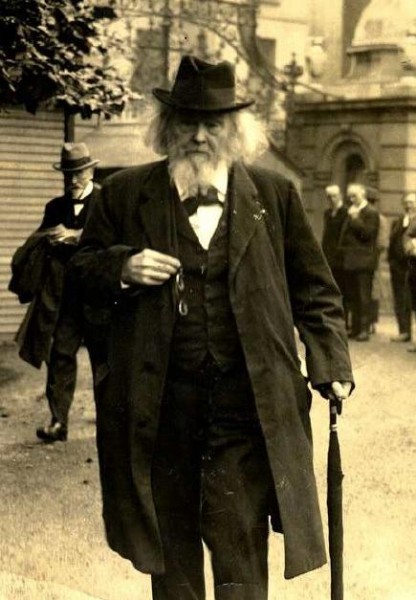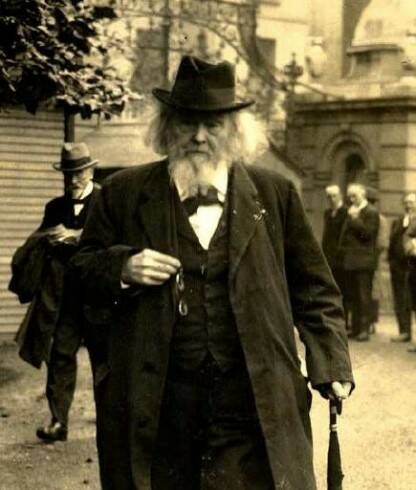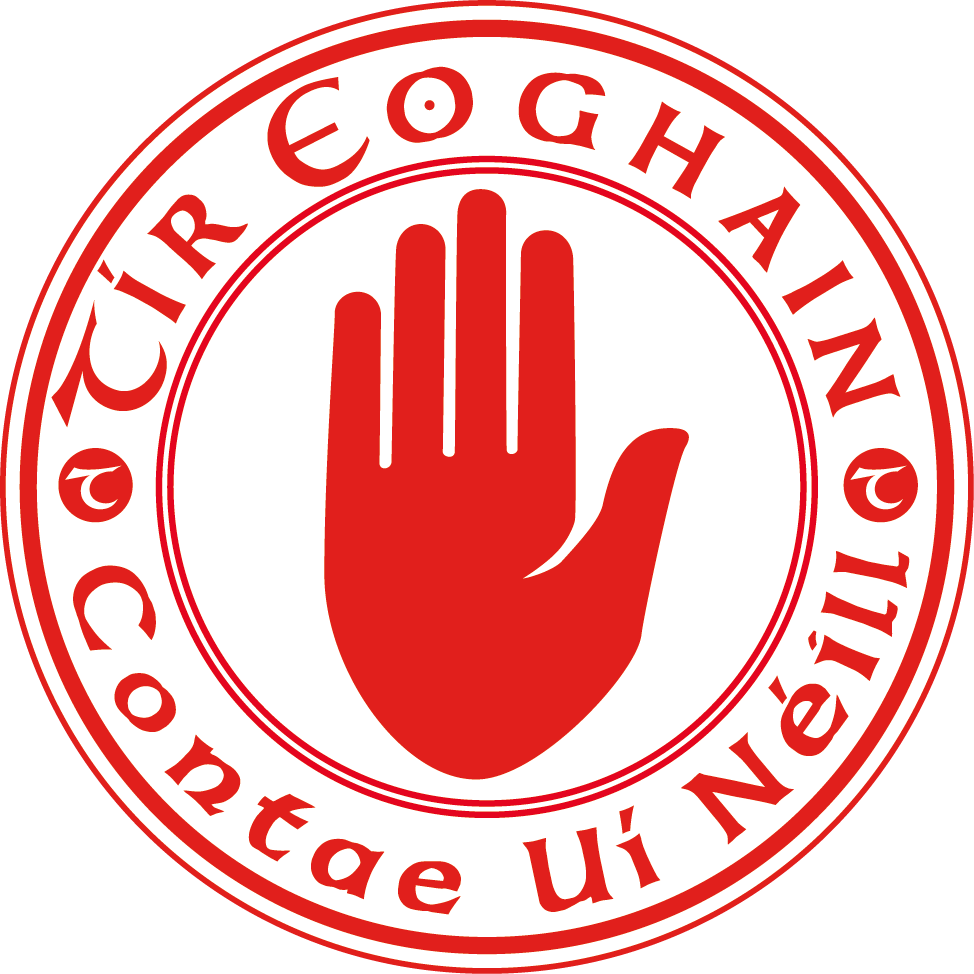Dr George Sigerson 90th Anniversary
Tuesday 17th February 2015 will mark the 90th anniversary of the death of one of Strabane and Tyrone’s most famous sons, Dr George Sigerson who was born on 11th January 1836 at Holyhill just outside Strabane, he died at his home in Clare Street Dublin on 17th February 1925 aged 89 years and was laid to rest in Glasnevin Cemetery Dublin.
George Sigerson was the son of William and Nancy (nee Neilson) Sigerson; he had three brothers James, John and William and three sisters, Ellen, Jane and Mary Ann. His parents are buried at St Mary’s cemetery in Cloughcor.
George Sigerson was educated at the local Glebe school, he then moved to Letterkenny Academy before moving on to Tirgarvil Maghera and then on to St Joseph’s College Paris. On his return to Ireland he studied at Queen’s College in Galway and Cork and finally completed his medical studies at the Catholic University School of Medicine in Dublin. In December 1861 George Sigerson married Hester Varian who was living in Dublin and came from Cork parents; they were married at the Church of the Immaculate Conception, Marlborough Street, Dublin. His wife Hester died in 1898 aged seventy. They had four children, a son William died in 1864 aged one year old, another son George Patrick died in 1903 aged thirty-six, a daughter Dora died in 1918 aged fifty-one whilst another daughter Hester died in 1939 aged sixty-nine.
Sigerson’s home in Clare Street Dublin was a real hive of activity of those from the literary and political world and amongst his many friends over the years whom he had close contact with included the likes of Douglas Hyde, John O’Leary, Charles Kickham, James Stephens, Thomas McDonagh, Joseph Mary Plunkett, Pádraig Pearse, Jeremiah O’Donovan Rossa, Thomas Clarke and Sir Roger Casement. In terms of his relationship to the G.A.A., he will be forever remembered for presenting the Sigerson Cup in 1911 for competition between the universities of Ireland. It’s the oldest trophy in the G.A.A. and is still keenly contested for till the present day. Many Tyrone players have won Sigerson Cup medals over the years with Brian Dooher, Damian Devine, Niall Conway, Declan McCrossan, Fergal Logan, Noel Donnelly, Pascal Canavan, Peter Donnelly and the late Cormac McAnallen amongst just some of the winners. The Strabane Sigersons club proudly boast his name in honour of one of the most famous sons of Strabane and their club grounds are known as Páirc Mhic Sioghair (Sigerson Park). There is also a street in Strabane named in his honour, Sigersons Place which is situated in the old Ballycolman area. The name of Sigerson is also inscribed on the boat sculpture in Abercorn Square and on a plaque at the car park wall in the Bowling Green. Back in 2011, the Ulster History Circle unveiled a Blue Plaque outside Strabane Library on Railway Road to commemorate Sigerson with the then President of the Ulster Council and now the soon to be G.A.A. President Aogán O’Farrell amongst the distinguished guests from many walks of life that were in attendance.
He was widely known throughout Ireland as a foremost authority on medicine specialising in neurology and was also a prolific writer on scientific subjects. He was also an outstanding linguist and developed a keen interest in Gaelic poetry, folklore and song, one of his great works was ‘The Bards of the Gael and Gall’, whilst others included; The Poets and Poetry of Munster, History of the Land Tenures and Land Classes of Ireland and The Easter Song of Sedulius. Sigerson was deeply involved in the Society for Preservation of the Irish Language as far back as 1877. He wrote regularly using pseudonyms like Erionnach and An Ulsterman for articles printed in leading newspapers and periodicals such as; The Irish People, The Nation, Hibernian Magazine, The Shamrock, The Harp and The Irishman. He wrote on many issues including the land question, prisoner’s conditions, on the execution of the Manchester Martyrs and on Home Rule. Sigerson composed the famous Tyrone anthem The Mountains of Pomeroy and indeed other songs such as The Enniskillen Dragoons, The Heather Glen and Farewell to Sligo. He was the president of the National Literary Society for more than thirty years delivering many outstanding lectures and was also a founding member of Feis Ceoil which was first organised in Dublin in 1897. Dr George Sigerson was a member of Seanad Éireann in 1922 after having been proposed by the leader of the Free State government, William T Cosgrave and served up until his death in 1925. He acted as Chairman of the first ever Senate with his proposer and seconder stating that “it would an honour if this learned and faithful historian of Ireland would take the Chair for this day”. In August 1922 when the issue of an official symbol for the new Irish state was being discussed Sigerson was brought on board alongside Thomas Sadleir who was the registrar of the Office of Arms at Dublin Castle and in December of that year it was recommended that the harp should be adopted which is synonymous with Ireland till the present day. Many tributes were paid to Dr George Sigerson following his death in 1925 with the Irish News at the time leading on a piece titled “Great Irishman dead after life of service”. It went on to state that he was one of the most notable figures in Irish life and said that he was a keen politician, a brilliant scientist, a poet of great merit, a storywriter, an essayist, a profound scholar and a historian whose work will live.
No words of mine could ever attempt do justice to the memory of the late Dr George Sigerson, he was an outstanding man in many walks of life be it in the medical, scientific, literary, political, educational or language fields. He shone at everything he was involved with and truly is one of Ireland’s most remarkable persons and don’t forget that he was born just a few miles outside Strabane! We should all be extremely proud of him and on this the 90th anniversary of his death I urge you all to take the time to read the book penned by Derry man Ken McGilloway published in February 2011 titled “George Sigerson, Poet, Patriot, Scientist and Scholar” and you’ll discover just how important and influential the man really was.
An interesting fact that many out there that many might not know is that Ken McGilloway, the author of the book mentioned above is married to a direct relative of Dr George Sigerson. Helen McGilloway nee McGinnis originally from Strabane and now living in Derry is a great granddaughter of Sigersons sister Jane McGinnis. Jane resided with her brother in Dublin from 1897 until her death in 1913 running the house for her brother; her husband was Patrick McGinnis who had predeceased her was a prominent businessman in the Strabane area. Most locals will no doubt know Helens brother Joey who is a well known figure around the town. I hope that in some small way that I have paid some form of tribute to one of Strabane and Tyrone’s most famous sons on this the 90th anniversary of his death.
Dr George Sigerson 11th January 1836 – 17th February 1925 – Ar dheis Dé go raibh a anam.

Aodhán Harkin – Sideline View Strabane Chronicle


















